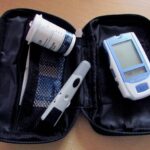Substance abuse prevention is essential to protecting individuals’ mental health and well-being. Substance abuse symptoms can significantly negatively impact a person’s physical and emotional health, yet its risk factors often continue to be neglected or overlooked in our society.
By understanding what substance abuse prevention entails and its importance, we can create effective strategies for combating substance abuse in communities worldwide.
This blog post will cover all the basics you need to know about what it takes to launch a successful substance abuse prevention program – from developing strategies tailored to your unique needs to resources that will help sustain your program over time.
What is a Substance Abuse Prevention Program
A Substance Abuse Prevention Program is an organized plan of action created to inform and protect individuals and families from drug abuse and substance misuse.
These programs strengthen community collaboration by providing resources such as education, support, positive behaviors, counseling, and outreach services to identify and prevent substance abuse or risky behaviors.
The program also includes targeted methods for family members to become involved in drug prevention and assistance with services for individuals who abuse drugs or need more intensive treatment.
Considering program effectiveness, a Substance Abuse Prevention Program is a valuable tool designed to reduce drug use in our communities and give families the resources they need to combat drug-related issues.
What Are the Goals of a Substance Abuse Prevention Program
A substance abuse prevention program strives to reduce substance use’s mental and personal health risks. Prevention programs offer tools and resources to help individuals with drug misuse make healthy lifestyle choices and focus on mental illness.
A substance abuse prevention program aims to improve mental health and decrease physical risk factors associated with substance use.
Some of the program’s primary goals, including prevention activities, are mentioned as follows.
Mental Illness
A goal of a Substance Abuse Prevention Program is mental health stability. Learning how to help individuals with mental health issues can reduce the burden of mental illness and help with suicide prevention.
Through access to mental health services, those affected by substance abuse can get support for their mental health needs and develop coping strategies for disrupting brain function.
Minimizing Risk Factors
One of the main focuses of the prevention program is to reduce risk factors such as peer pressure and post-traumatic stress disorder that are often associated with substance abuse problems in young people.
By targeting protective factors at a local level, the program offers goals like reducing risk-taking behaviors that can lead to addiction and substance misuse.
Behavioral Health
A national institute dedicated to preventing substance use and its related harms sets a goal to protect and promote behavioral control.
The program works closely, especially with middle school students, emphasizing the importance for them to understand how brain development is affected by effective behavior changes that directly act on their overall health.
Skill Development
Prevention Programs are invaluable tools for helping people abstain from drugs. Providing evidence-based practices, such as emotional development activities, prepares individuals with the tools they need to resist using the drug of choice and other drugs. A
dditionally, during early intervention, these programs often encourage parental monitoring for participants, which is an essential factor in preventing illegal and harmful drug use. By emphasizing skill development within these programs, we can ensure their efficacy is bolstered and better support those in need.
Healthy Lifestyle
Maintaining a healthy lifestyle is a vital goal of the program. While the adverse effects of substance abuse are well known, the latest research has revealed how an unpleasant childhood experience plays a massive role in negative behaviors later on in life.
Prevention programs set participants up for tremendous success, social competence, and self-awareness by teaching individuals how to make informed decisions concerning their well-being.
How Do Substance Abuse Prevention Programs Work
The design of substance abuse prevention programs is to minimize drug and alcohol use, as well as reduce the negative consequences associated with substance use. The national institute on drug abuse has identified several evidence-based practices for the entire population, which include:
- Providing educational activities for youth and young adults to prevent drug use.
- Developing life skills such as critical thinking, problem-solving, and decision-making.
- Teaching social skills like communication and dealing with peer pressure.
- Recognizing potential risks ahead of time.
- Intervening to avoid harmful effects of severe impairment.
- Incorporating family involvement in prevention plans and involving community factors to prevent harmful effects.
What Are the Benefits of a Substance Abuse Prevention Program
Prevention programs provide many benefits to individuals and the community. With technical assistance, community members can move beyond mere education and implement actions that lead to behavior change and positive friendships.

- Focused intervention – prevention programs that focus on substance abuse offer increased benefits to communities, from reducing the increased risk associated with alcohol use to supporting national leadership. Focused intervention is one of the primary tools for mental health illness and provides advantages for community-based organizations and individuals.
- A coordinated approach – to Substance Abuse Prevention Programs helps bring together areas critical for protecting young people from the consequences of substance abuse, such as underage drinking. These areas include family history, education, law enforcement, and community involvement. All areas play an essential role in protecting our nation’s youth from the risks caused by substance abuse to lead a well-balanced life.
- Improved quality of life – substance abuse prevention programs provide an opportunity for drug users to improve the quality of their lives via behavioral health services. Addressing drug misuse as a potential risk factor to disrupt brain function, individuals empowered to make healthier choices can lead to improved behavioral health. Programs can also help reduce drug-related harms by addressing environmental risks and protective factors to create a drug-free community. Substance abuse prevention programs offer hope for a better life through improved medical, behavioral, and social well-being.
Conclusion
Substance abuse prevention programs are essential tools to help people make healthy choices and gain behavior control. Individuals can reduce risk factors for developing substance use disorders through education.
Educating the public on the warning signs of addiction can empower individuals to work toward sustained recovery and break free from the cycle of substance misuse.




